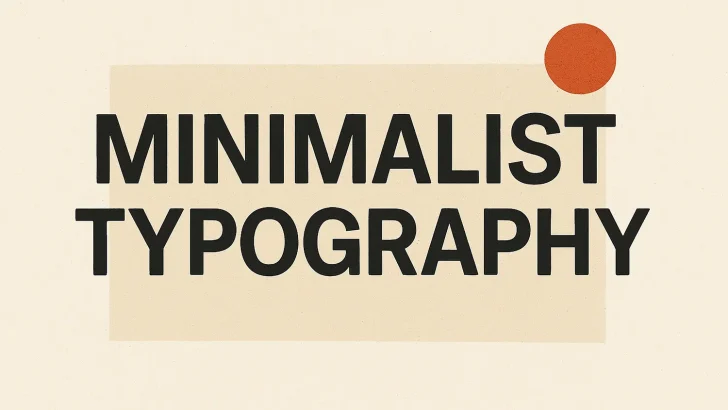Minimalist typography in 2025 isn’t dead — it’s evolving. Discover how clean, intentional type design adapts to today’s expressive, AI-driven creative world.
For years, minimalist design has defined the modern digital aesthetic — clean layouts, white space, and typography that whispers instead of shouts. But as visual trends shift toward maximalism, nostalgia, and expressive fonts, many designers wonder:
Is minimalist typography still relevant in 2025?
The short answer: Yes — but it’s evolving.
Let’s explore how minimalist type design is adapting to today’s creative world.
1. The Evolution of Minimalism: From Flat to Feel
Early 2010s minimalism was all about neutrality: sans-serif typefaces, gray tones, and simplicity. But that stripped-down look eventually became too predictable.
Now, we’re seeing “warm minimalism” — where fonts maintain clean lines but add subtle personality through:
-
Softer geometric curves
-
Rounded edges and natural spacing
-
Gentle contrast and organic proportions
Fonts like Söhne, GT America, and Aeonik define this new minimalist wave — still simple, but undeniably human.
2. Minimalist Fonts Meet Emotional Branding
In a world flooded with overstimulation and digital clutter, minimalist typography now serves as a visual detox.
Brands use calm, neutral type to communicate:
-
Trust and transparency (tech and finance brands)
-
Mindfulness and calmness (wellness and lifestyle products)
-
Precision and clarity (modern startups)
Think of Apple, Airbnb, or Muji — their typography is minimalist, but emotionally deliberate.
3. Color and Composition Bring Minimalism to Life
The new minimalism isn’t black and white anymore. Designers are pairing simple fonts with vibrant colors, gradients, and asymmetric layouts to create energy without chaos.
The trick is balance — using minimal typography as the anchor while visual experimentation happens around it.
This is especially evident in web design and digital branding, where subtle animation and dynamic color transitions replace heavy graphic elements.
4. AI Tools Reinforce Minimalist Aesthetics
Ironically, AI-driven design tools like Midjourney, Runway, and Figma’s AI features are helping revive minimalism.
Why? Because AI-generated visuals are often visually dense — full of detail and complexity. Pairing them with minimalist type creates a clean, modern contrast that feels intentional and editorial.
Designers are learning that when AI goes maximal, typography must simplify.
5. The Future: Purposeful Simplicity
Minimalism isn’t about removing elements — it’s about focusing attention.
In 2025, minimal typography is not a lack of design, but a strategic silence amid the noise.
We’ll continue to see:
-
Neutral sans-serifs for readability and clarity
-
Custom minimalist typefaces built for branding consistency
-
Dynamic, animated text that keeps minimalist layouts engaging
The aesthetic may evolve, but the philosophy remains: less, but better.
Final Thoughts
Minimalist typography isn’t dying — it’s growing up.
As brands search for authenticity and clarity, the power of simple, intentional type design is stronger than ever.


